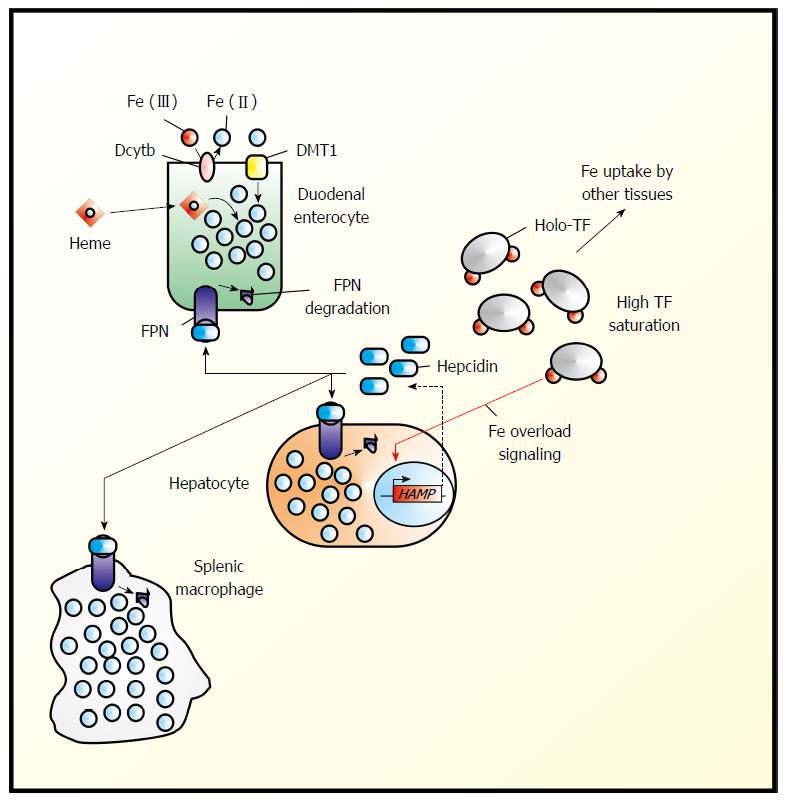Copyright
©The Author(s) 2015.
World J Biol Chem. Aug 26, 2015; 6(3): 78-82
Published online Aug 26, 2015. doi: 10.4331/wjbc.v6.i3.78
Published online Aug 26, 2015. doi: 10.4331/wjbc.v6.i3.78
Figure 1 Hepcidin in the regulation of systemic iron homeostasis.
Systemic iron (Fe) homeostasis is primarily regulated by the hepcidin-ferroportin (FPN1) axis. Duodenal enterocytes import dietary Fe from several sources including heme Fe and non-heme Fe, which typically must be reduced at the level of the apical membrane by chemical reductants such as ascorbate[26,27] or by plasma membrane oxidoreductases (e.g., Dcytb), The reduced Fe then enters a common intracellular pool of Fe. “Sensing” the level of transferrin (TF) saturation and levels of Fe stores under conditions of Fe overload, hepatocytes up-regulate the expression of hepcidin, which is then released into the plasma where it can then bind to ferroportin (FPN1), thereby triggering FPN1 internalization and proteosomal degradation[1].
- Citation: Lawen A. Is erythroferrone finally the long sought-after systemic erythroid regulator of iron? World J Biol Chem 2015; 6(3): 78-82
- URL: https://www.wjgnet.com/1949-8454/full/v6/i3/78.htm
- DOI: https://dx.doi.org/10.4331/wjbc.v6.i3.78









